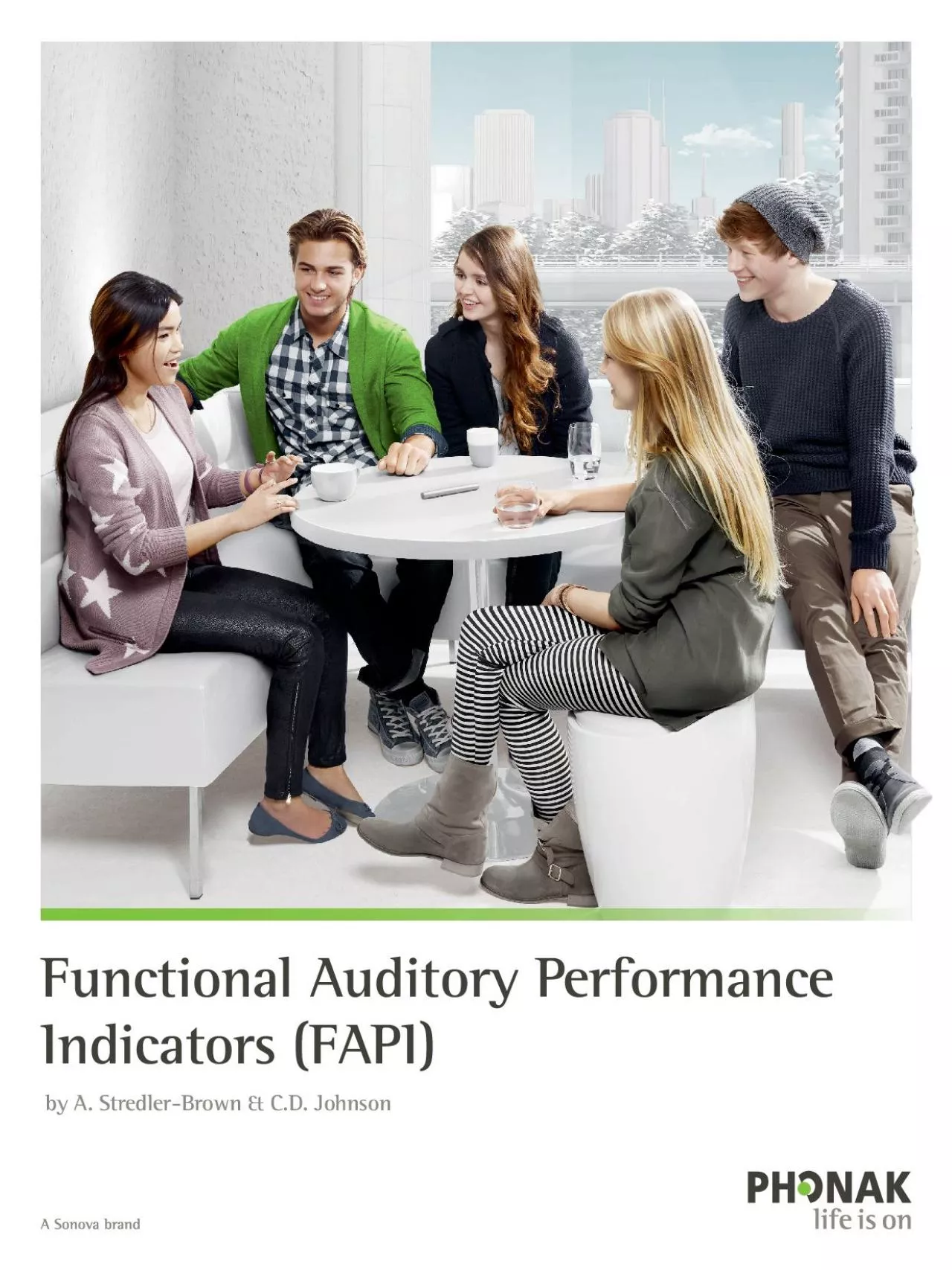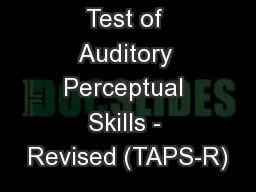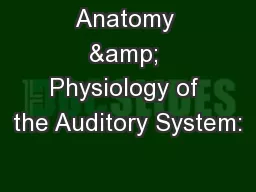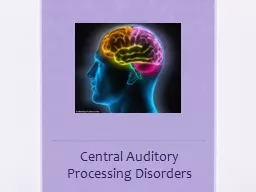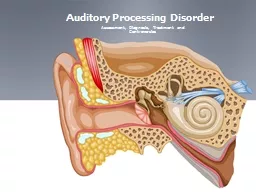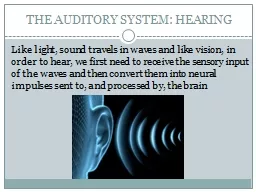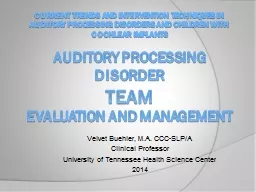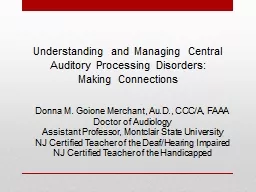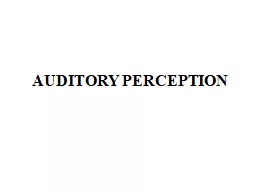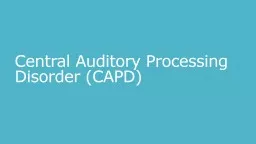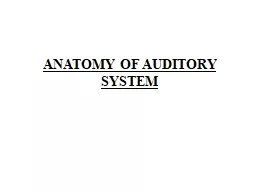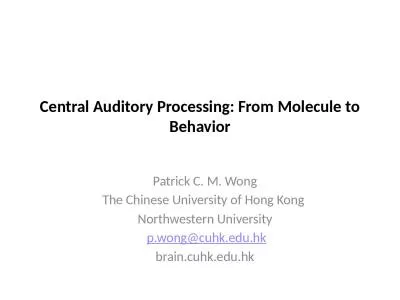PDF-Functional Auditory Performance Indicators FAPI by A StredlerBrown
Author : ashley | Published Date : 2021-06-05
A StredlerBrown CD Johnson 2001 2003 2004 2 FAPI Overview The child demonstrates understanding of linguistic information that is heard by identifying what is said
Presentation Embed Code
Download Presentation
Download Presentation The PPT/PDF document "Functional Auditory Performance Indicato..." is the property of its rightful owner. Permission is granted to download and print the materials on this website for personal, non-commercial use only, and to display it on your personal computer provided you do not modify the materials and that you retain all copyright notices contained in the materials. By downloading content from our website, you accept the terms of this agreement.
Functional Auditory Performance Indicators FAPI by A StredlerBrown: Transcript
Download Rules Of Document
"Functional Auditory Performance Indicators FAPI by A StredlerBrown"The content belongs to its owner. You may download and print it for personal use, without modification, and keep all copyright notices. By downloading, you agree to these terms.
Related Documents

